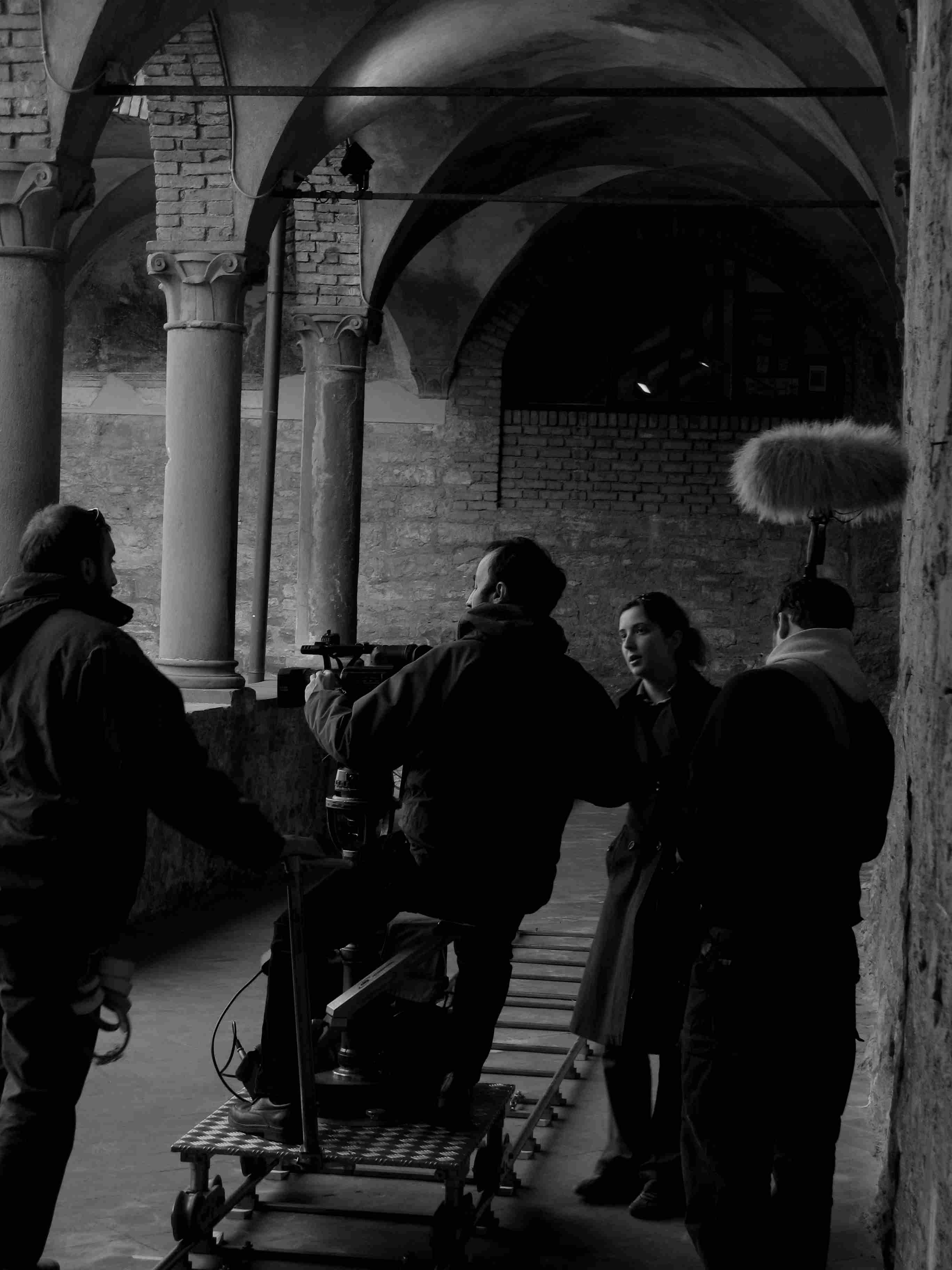Italy 2009, 38′
DIrector Daniela Persico
Production company Quarto Film
Sponsored by the Fuori Formato programme of the Provincia di Milano
Screenplay Daniela Persico
Executive producer Giovanni Maderna
Director of Photography Pierluigi Laffi
Live recording Alessio Fornasiero
Editing Valentina Andreoli
Sound Editing Francesca Genevois
Costumes Veronica Salvini
Cast Sara Masotti (Anexia), Laura Pizzirani (Adeleita), Angela Dematté (Grazia D’Arzago)
Invitations and awards Locarno International Film Festival 2009, Buenos Aires Festival Internacional de Cinema Indipendiente (BAFICI) 2010, Filmmaker Doc 2009
Traces of some human lives can be found among the lines of ancient wills. They are those of three women who lived in Bergamo between the XIII and XIV centuries, in surroundings in which life was always overshadowed by the hallowed dimension that took over, arranged and saved its earthly counterpart. Anexia, a landowner who never married, left her family’s estate evenly split between two men, determined in life as in death not to favour one over the other. Adeleita, a very wealthy young widow, left her estate to poor young girls so that they may have a dowry and freely choose between taking the veil or getting married. Grazia D’Arzago, an abbess from a well-known aristocratic family, after having brought art into a cloistered convent, decided to focus on the poverty that afflicted Bergamo. These three women have left us their testimony in the parchment documents containing their wills, but also in the places of worship in which they prayed and in the frescoes in front of which they pondered over their choices.
Today, these places are used very differently. The Franciscan monastery in Bergamo, where the restless Anexia wandered, is now a place where people gather to sip summer cocktails. The Poor Clares’ convent where the widow Adeleita withdrew to pray, now houses the town’s high school and in the ancient chapel, now converted into a gym, girls train during their physical education lessons in a new model of freedom of choice evoked in the words of Adeleita’s will. The mission of handing down the culture of which Abbess Grazia D’Arzago was a key figure and who left us an important manuscript on the life of Santa Grata, is carried on today through the painstaking work of the restorers who are preserving the traces of our past.
Director’s notes
I was always fascinated by the faces with rapt expressions, the figures in strange postures
and the unusual animals that emerged among the arches of the cloister of
my elementary school. I had the good fortune to attend a state school in Upper Bergamo
which was housed in the monastery of San Francesco, the former residence of
the Franciscan order in Bergamo.
I was intrigued by a portrayal of the world that was so different and this got me
thinking about the vast gap between the medieval vision of it and our own.
In my research, I came up against the difficulty of taking the past as a point of reference,
a utopian step which, in movies, often means facing a lack of representation.
For this reason, I began working on authentic medieval documents
(the wills and the frescoes, the miniatures, the literary works and
the music of the period), attempting to garner their spirit and reproduce it in
my screenplay.
Et Mondana Ordinare juxtaposes scenes re-evoking testimonies of
the Middle Ages and sequences set in the present: two eras that are very different
in appearance, but linked by the places chosen and the emotions they inspire.
Alternating the written wills read by actresses in the original places with
the scenes that animate them today creates strange associations of ideas:
the continuity of sentiments, gestures and choices made by the women,
the distance between a uniform view of life and space and the modern day
fragmentation of them, the desire for a new communal milieu narrated through
words from the past and rediscovered in some present day situations.
Daniela Persico (Treviso, 1981) has lived and studied in Bergamo. She graduated in liberal arts at the Catholic Università del Sacro Cuore in Milan. She writes film reviews for the Milan pages of “la Repubblica” and the Lugano daily “Il Giornale delPopolo. She also contributes to “Lo Straniero”, the cultural magazine edited by Goffredo Fofi. She has published the essay Claire Simon-La leggenda dietro la realtà (Agenzia X, 2008) and contributed to several anthologies. Et mondana ordinare is her directorial debut.
[flv width=”480″ height=”360″]http://www.quartofilm.com/wp-content/uploads/2010/02/etmondana_tr768K_Stream0011.flv[/flv]

